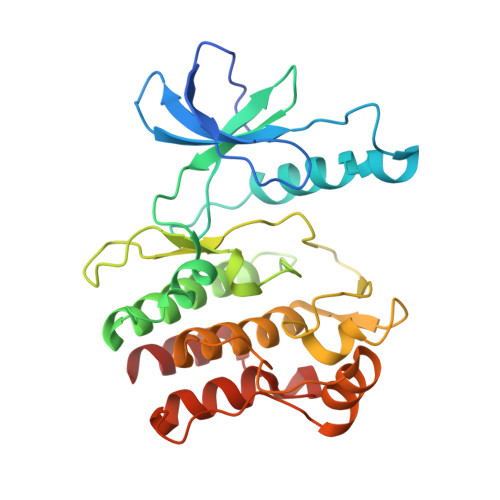Roco kinase structures give insights into the mechanism of Parkinson disease-related leucine-rich-repeat kinase 2 mutations.
Gilsbach, B.K., Ho, F.Y., Vetter, I.R., van Haastert, P.J., Wittinghofer, A., Kortholt, A.(2012) Proc Natl Acad Sci U S A 109: 10322-10327
- PubMed: 22689969
- DOI: https://doi.org/10.1073/pnas.1203223109
- Primary Citation of Related Structures:
4F0F, 4F0G, 4F1M, 4F1O, 4F1T - PubMed Abstract:
Mutations in human leucine-rich-repeat kinase 2 (LRRK2) have been found to be the most frequent cause of late-onset Parkinson disease. Here we show that Dictyostelium discoideum Roco4 is a suitable model to study the structural and biochemical characteristics of the LRRK2 kinase and can be used for optimization of current and identification of new LRRK2 inhibitors. We have solved the structure of Roco4 kinase wild-type, Parkinson disease-related mutants G1179S and L1180T (G2019S and I2020T in LRRK2) and the structure of Roco4 kinase in complex with the LRRK2 inhibitor H1152. Taken together, our data give important insight in the LRRK2 activation mechanism and, most importantly, explain the G2019S-related increase in LRRK2 kinase activity.
Organizational Affiliation:
Department of Cell Biochemistry, University of Groningen, 9747 AG, Groningen, The Netherlands.















